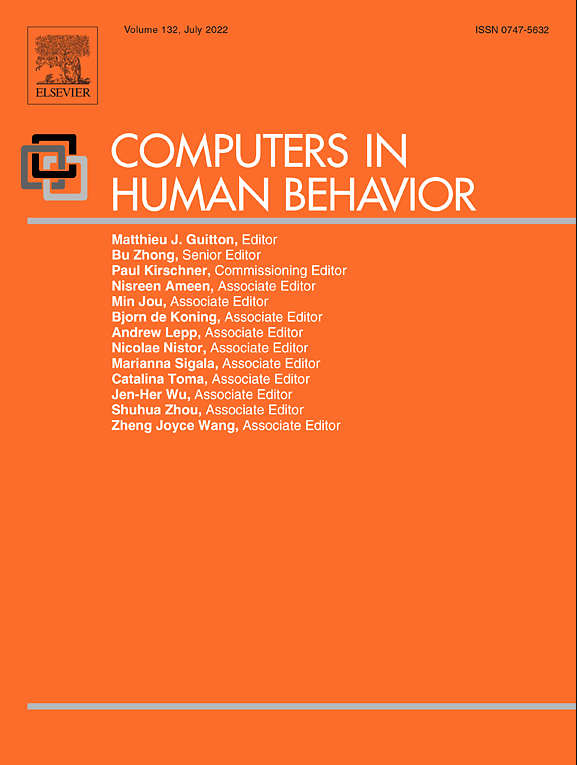Editorial Board / Publication information
Integration of human factors in networked computing
Measuring quality of perception in distributed multimedia: Verbalizers vs. imagers
Thinking style impacts on Web search strategies
“How do you know that I don’t understand?” A look at the future of intelligent tutoring systems
Perceived usefulness and performance of human-to-human communications on television
Mobile information access in the real world: A story of three wireless devices
The roles of sensory modalities in collaborative virtual environments (CVEs)
Navigation methods of special needs users in multimedia systems
Capturing essential intrinsic user behaviour values for the design of comprehensive web-based personalized environments
Improving learner quality of experience by content adaptation based on network conditions
Choose your “buddy icon” carefully: The influence of avatar androgyny, anthropomorphism and credibility in online interactions
How social is social responses to computers? The function of the degree of anthropomorphism in computer representations
Emotions in direct and remote social interaction: Getting through the spaces between us
Impasse-driven learning in the context of video games
Effects of visual cue and spatial distance on exitability in electronic negotiation
Improving children’s reading comprehension and use of strategies through computer-based strategy training
Computer anxiety: A cross-cultural comparative study of Dutch and Turkish university students
Understanding e-learning continuance intention in the workplace: A self-determination theory perspective
Assessing emotions related to learning new software: The computer emotion scale
Pedagogical lurking: Student engagement in non-posting discussion behavior
Assessing the computer attitudes of students: An Asian perspective
Spatial navigation in large-scale virtual environments: Gender differences in survey tasks
The effects of spatial contiguity within computer-based instruction of group personalized two-step mathematics word problems
Monitoring, planning, and self-efficacy during learning with hypermedia: The impact of conceptual scaffolds
Revealing the ‘real’ me, searching for the ‘actual’ you: Presentations of self on an internet dating site
Targeting implementation efforts for maximum satisfaction with new computer systems: Results from four human service agencies
Computer attitude in psychiatric inpatients
Enhancing self-perceived effects using Web-based portfolio assessment


